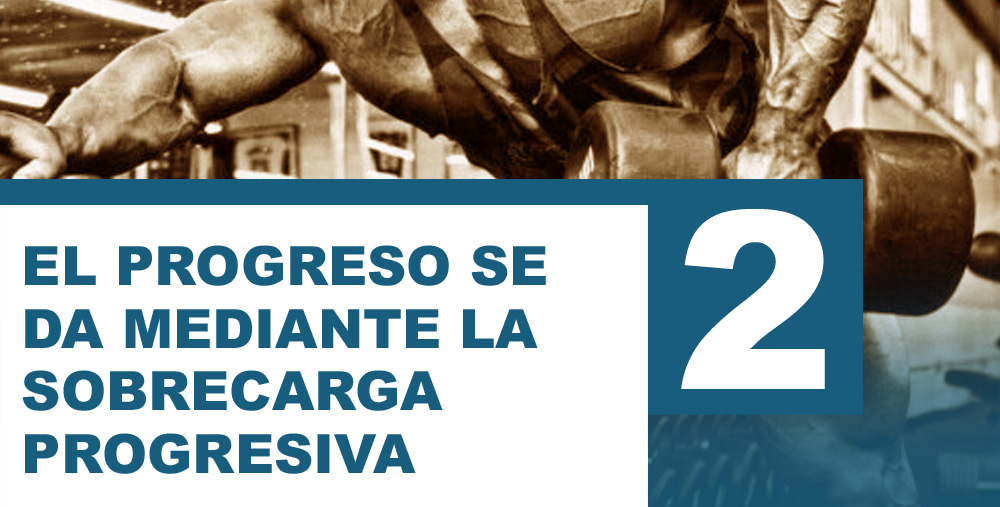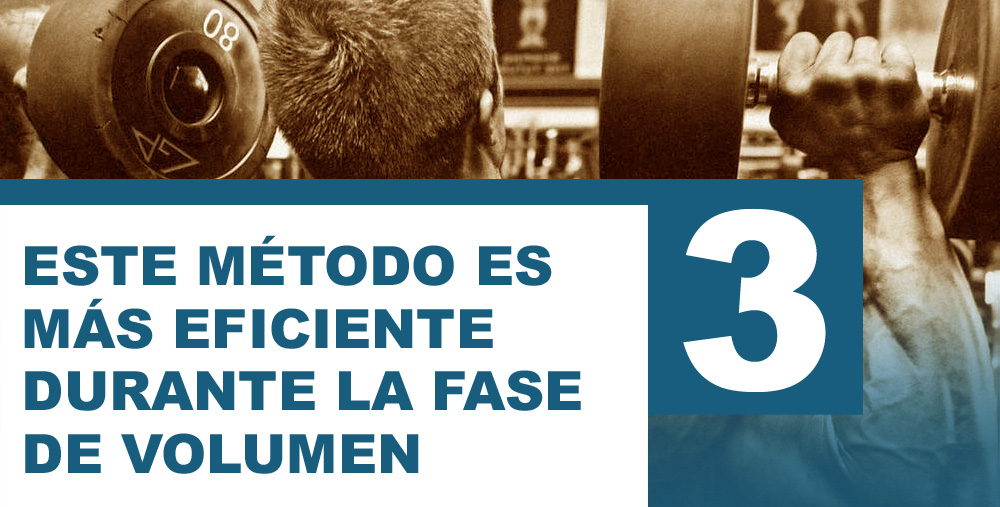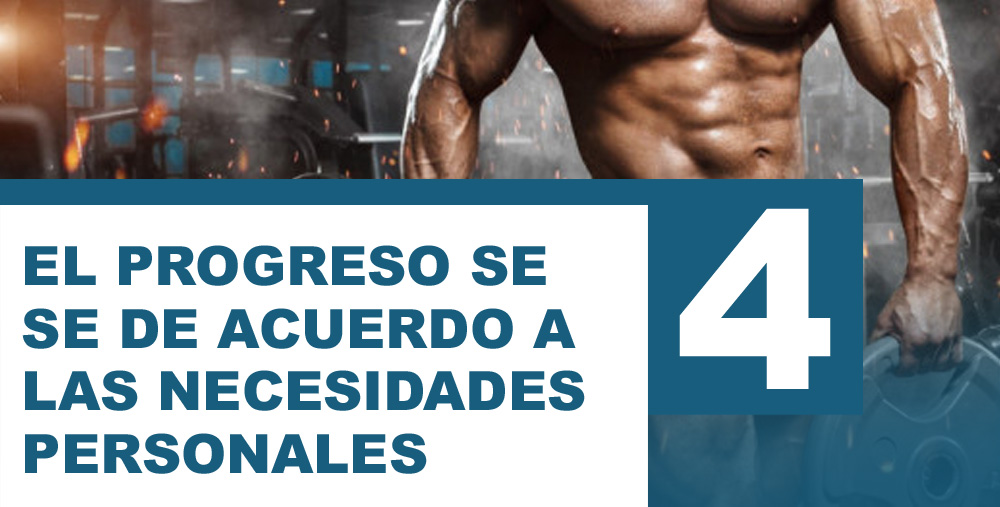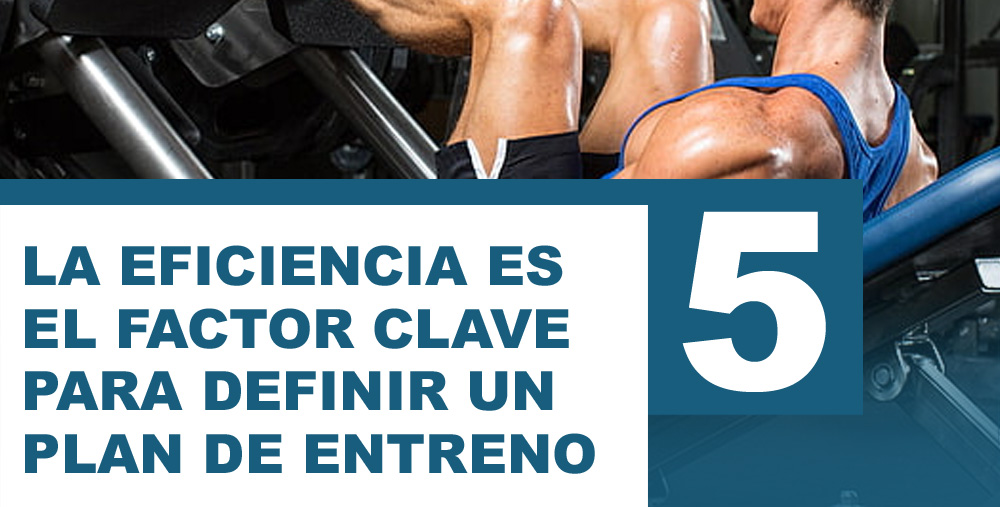In the following article we explain how to use the reverse pyramid training to maximize muscle gains.
If you want to break the possibility of plateaus and start gaining new muscle mass, this training method, called reverse pyramid could help you, as well as challenge you with your personal records.
Designed for intermediate or advanced bodybuilders, it is a training method in which the first series of a given exercise is performed with the heaviest possible weight, then going down makes it light, although only for the high repetition range
Typically, each subsequent series is 8-10% lighter than the previous one.
It is best suited to large compound movements that work a large part of the body’s musculature, such as squats, deadlifts, bench presses and chins.
Reverse pyramid : your benefits
According to a study published in the Journal of Sports Science and Medicine, training in a moderate rep range (8-12 reps) allows better muscle gains (hypertrophy) while training in the heavy rep range (2- 4 reps) allows for better strength and / or power gains (1).
With reverse pyramid training, you will train in both rep ranges and thus get the best of both worlds.

Another benefit of this method is that it allows you to lift close to your true strength potential, that is, the point where gains are maximized.
The first set of a given exercise is performed with the highest weight when the muscles are fresh and unaffected by fatigue. (this does not mean no heating).
And finally, due to the high intensity of reverse pyramid training, it is able to provide a powerful training stimulus with a relatively low training volume. This makes it suitable for those who are short on time and need to do everything as efficiently as possible.
Reverse pyramid : how to train
Here, the first set of an exercise should be performed between 4 to 6 repetitions, completing a full range of motion and without the help of a partner. The final repetition should be done with maximum effort, but without reaching failure.
After completing the first set, rest for a minimum of 90 seconds and a maximum of 3 minutes. The rest period should be long enough to allow you to complete the required number of reps for the next set.
In the second set, try to complete 6 to 8 reps with about 90% of the weight you used in the first set. In the third series, reduce the weight by another 10% and, following the same protocol, with maximum effort without reaching failure.
Here’s an example to take advantage of the reverse pyramid in any of your training weeks.
Monday:
- Bench Press: 3 sets total, starting with 6-8 reps, then 10-8 reps, then 10-12 reps, reducing 10% of the weight between sets.
- Barbell row: the same protocol as above.
- Lying French Press: 2 sets of 10 reps.
- Barbell curls: 2 sets of 10 reps.
Wednesday:
- Front Squats: 3 sets of 6 reps, then 8 reps, then 10 reps.
- Pull-ups: 3 sets of 6 reps, then 8 reps, then 10 reps.
- Hanging Leg Raise: 2 sets of 10 reps.
- Barbell curl: 2 sets of 10 reps.
Friday:
- Conventional deadlift: 2 sets of 6 reps, then 8 reps.
- Overhead press: 3 sets of 6 reps, then 8 reps, then 10 reps.
- Lateral raises: 2 sets of 10 reps.
- Aerial extensions: 2 sets of 10 reps.
Reverse Pyramid : how to progress
To keep growing and getting stronger, you must keep increasing the training stimulus and this is the essence of progressive overload.
Whether in the form of increased reps, increased weight, or decreased rest periods, each set of reverse pyramid training gives you the opportunity to apply progressive overload.

The most important aspect to progress with this method is to keep an exercise log, where you write down the number of repetitions you completed and with how much weight for each exercise.
In each workout, the amount of weight you lift will be based on what you lifted in the last workout, and you can even add your feelings, your emotions, and your ability to exert yourself on those days.
At this point we give an example with the training bench press with reverse pyramid , using the incremental progression model.
With this method, you only increase the weight once you reach the upper rep range for a given set.
Inverse Pyramid : Volume or Definition
It can be effective both in the cutting phase and in the volume phase; It all depends on how much training stimulus you can personally recover from.
Just keep in mind that in circumstances of caloric deficit, the recovery capacity is lower; Here, reducing training volume to match the reduction in recovery capacity is a critical step for the reverse pyramid to work or not to define.
The reverse pyramid training is to increase the size of the muscles because muscle failure occurs more frequently.
From the first set to the last one can reach the point of pre-exhaustion near failure, an important element when it comes to stimulating the types of mechanisms responsible (including stimulation on more muscle fibers), which facilitates the development of volume phase hypertrophy.
It also ensures a high volume of work, but also allows you to train with more intensity and weight. When you consider the entire volume of work (sets and reps) of a given movement, you can achieve a greater degree of intensity and tension on the target muscle.

But, always be careful that “training in this way incurs greater muscle breakdown”, being necessary to take anti-catabolic supplements.
An example to progress
The concept can best be demonstrated with an example where the rep ranges for each set are as follows.
- 1st Series: 4-6 repetitions.
- 2nd Series: 6-8 repetitions.
- 3rd Series: 8-10 repetitions.
Training in week 1 would look like this:
- 100 kg x 4 reps.
- 90 kg x 6 reps.
- 80 kg x 8 reps.
This is the starting point, because in week 2, you will try to achieve a higher repetition in one or, ideally, in all three series.
Workout 2 in week 2 would look like this:
- 100 kg x 5 reps
- 90 kg x 7 reps
- 80 kg x 9 reps
So in the second week you should be able to progress by 1 repetition in each of the 3 series, which makes you prepare to increase the repetitions again until you reach 6, 8 and 10 in week 3 repetitions using the same weight.
In the fourth week, you should be thinking about adding an extra weight, which generally for the bench press, about 4 or 6 kg, to return to the number of sets of week 1, to progress again.
The key, however, is to move forward, however little it may be; This depends on the amount of experience you have during your sports life.
Remember, that if you have already gained between 7 – 10 kg of lean muscle with training, it will be more difficult for you to progress compared to someone who has only gained between 2 to 5 kg, because here other variables will come into play to progress like technique or periodization, plus how you balance volume and intensity.
Other ways to progress
By maintaining this rhythm you will gain strength and muscle mass, however you can change the repetition range to suit your physical needs and specific sports goals.
Suppose you want to gain lean body mass and lose body fat (by altering body composition). So, simply change your rep range to 8, 10, 12 and maintain a high intensity by resting 30-60 seconds between sets.
But, in addition to modifying the inverse pyramid to suit your needs, you can also modify it to suit your energy needs or, more importantly, when your time is limited.
During those days when your energy is reduced, motivation is not everything, instead of working with your usual intensity for the 3 planned exercise sets, it is better to do as much as possible in one set.

It’s better to do your best in a series than to give in to your feelings, you can just drop everything and go home. Your rep range for this shouldn’t be more than 8 reps for most exercises.
On the other hand, you may want to incorporate your own training techniques to increase intensity and isolation, so that the set becomes progressively more difficult to perform for each muscle repetition, which is also exhausting.
Regardless of how you do it, always keep in mind that the first series of each exercise is the most important of all … if any of the series counts, this one does …
Psychology and physiology come into play
Your first set will undoubtedly feel and feel heavy, but you will be fresh and able to use all of your existing muscle fibers and energy to gain weight.
As your energy will be cooler for the first set, it will be stronger than if you used the same weight for the last set using the ascending pyramid (weight) which is the conventional method … that’s not the psychology, but it’s the physiology …
Psychology focuses on when the mind perceives that easier to go down than to go up, the weight will not only appear lighter but will actually be lighter.
In fact, your descending series in the inverse pyramid will feel like a trampoline action because your muscles were already fully stimulated in the first two sets. You may experience effortless sets sometimes due to this trampoline action.
Whatever comes after the first set, your muscles will always be ready and so will your mind-muscle connection.
Each descending set is like a warm-up but just as intense and this is comforting, because you’ll know that the last set is your last chance to use all available and existing muscle fibers to stimulate growth.
A few months of training using the reverse pyramid can be a cure for athletes who have been stuck because they haven’t tried hard enough.
What happens is that when many people try it for the first time, they discover that they are capable of much more than they thought. This is because it is the first time that they have to constantly approach muscle failure, therefore you will also require good supplements to reduce fatigue.
The pros of the inverse pyramid
There are two areas in which this type of training excels;
- The first is time efficiency; in fact, studies show that the inverse pyramid is more efficient in time, and superior results are also suggested (2). So yeah, if time is limited and you can’t be in the gym more than three times a week, you should make each set count.
- The second is dieting; This method is without doubt one of the most effective ways to gain or retain muscle and strength while losing fat. You can take advantage of cheat meals and use them specifically to work hard on each set, on each rep.
We could add a third point and say that it is the most fun way to train. And, although this would be too subjective, experience indicates that those who follow the protocol finish it.

The cons of the inverse pyramid
It is not sustainable and will eventually stop providing enough training stress after a while; This goes through the ability to recover, as he trains very hard.
Workouts are developed only with low frequencies, in addition to low volumes. Now, as volume is one of the main drivers of progress, it will eventually cease to be effective.
Training too hard near failure can backfire on proper motor learning. The technique must be very good to avoid injuries near technical failure to obtain maximum repetitions.
If it becomes stressful on the mind and / or nervous system, performance becomes sub-optimal, however this could only happen with intermediates who still look like beginners.


